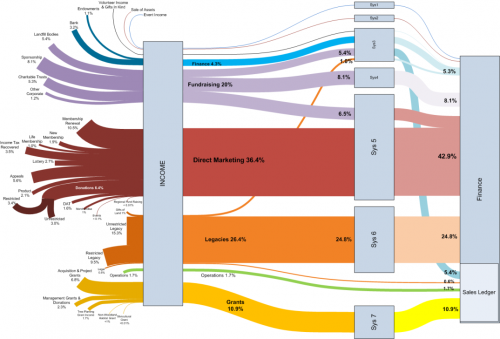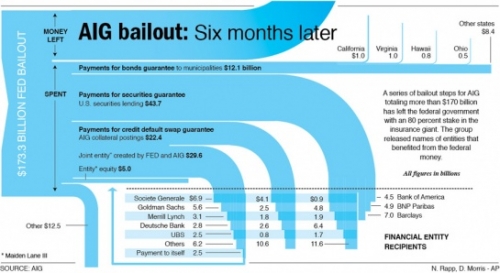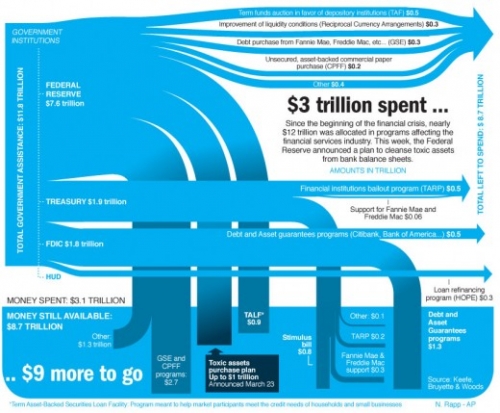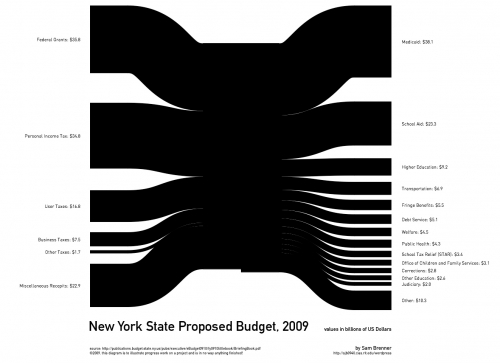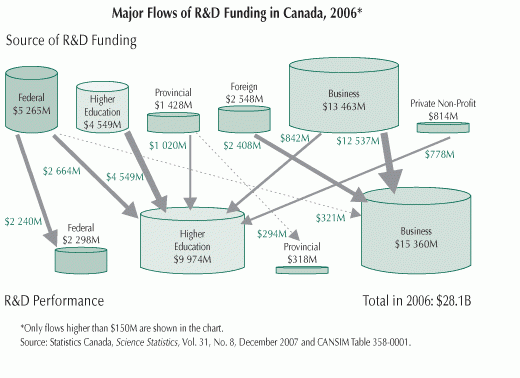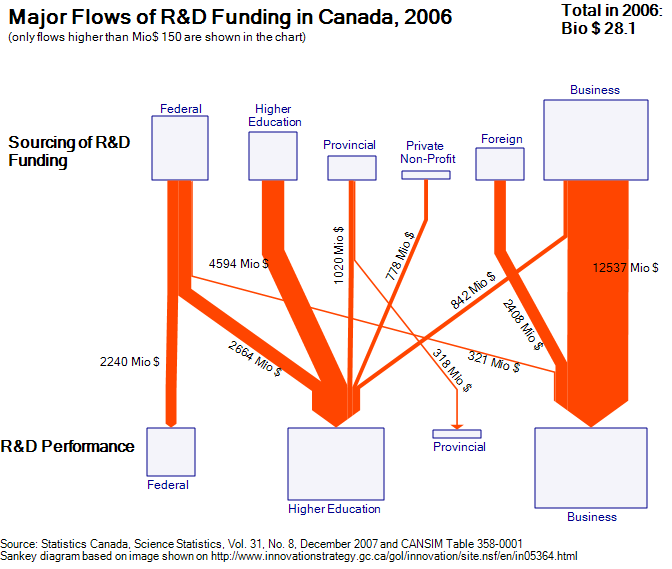The ‘Landscape of Climate Finance’ is a project by the Climate Policy Initiative. CPI “works to improve the most important energy and land use policies around the world, with a particular focus on finance. (This) helps nations grow while addressing increasingly scarce resources and climate risk.”
At http://www.climatefinancelandscape.org/ the have put up graphically appealing and beautifully crafted slideshow with facts on climate finance. How much is spent? Where does the money go to? Who are the receiving countries. Please browse the slideshow here.
Below are two Sankey diagrams from the 2013 report on climate finance.
The first is a rather coarse overview showing the international funding of climate projects by OECD countries and Non-OECD countries. On the right side the recipients breakdown: within their own borders, OECD countries, Non-OECD countries. Details on the countries are available in the report. Flows are in billion US$.
The other Sankey diagram is more complex. Here we can see the sources of climate finance and intermediate agents, the instruments, the recipients and the uses (adaptation and mitigation).
The incoming flows from the left are mostly “not estimated” (NE) and therefore are not to scale with the outgoing arrows. There are many annotations on assumptions and constraints, so please don’t make conclusions directly from the image. In the online version one can hover over the nodes to receive more information.
Congratulations to CPI for this work. They are tackling a complex issue graphically, and make good use of Sankey diagrams for visualization.
